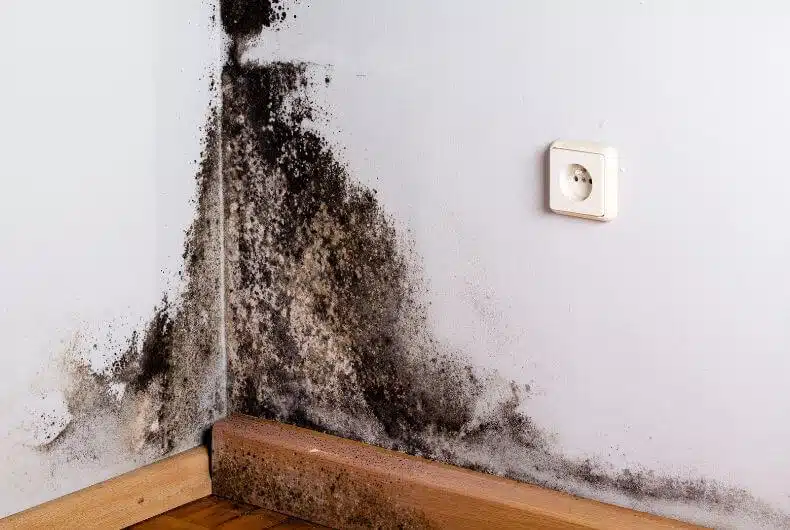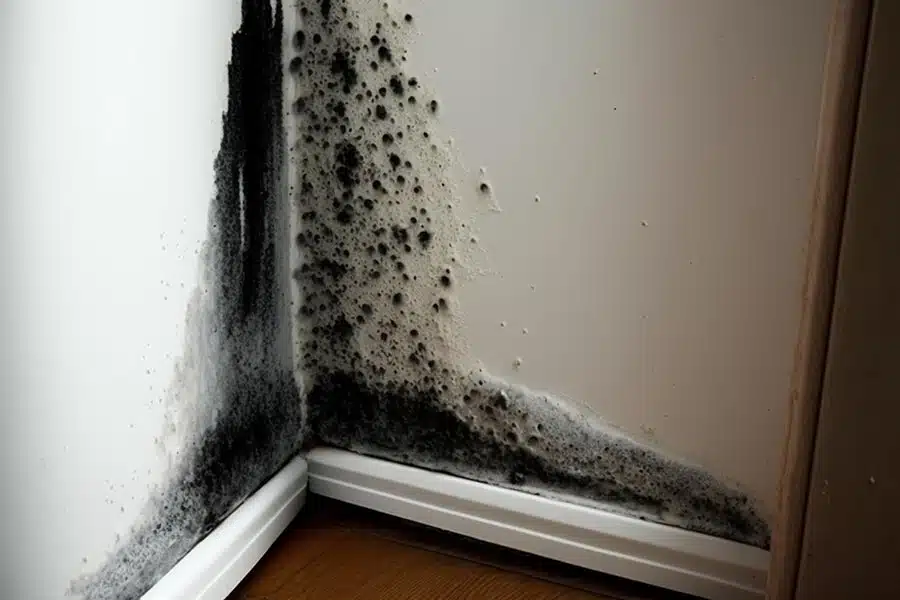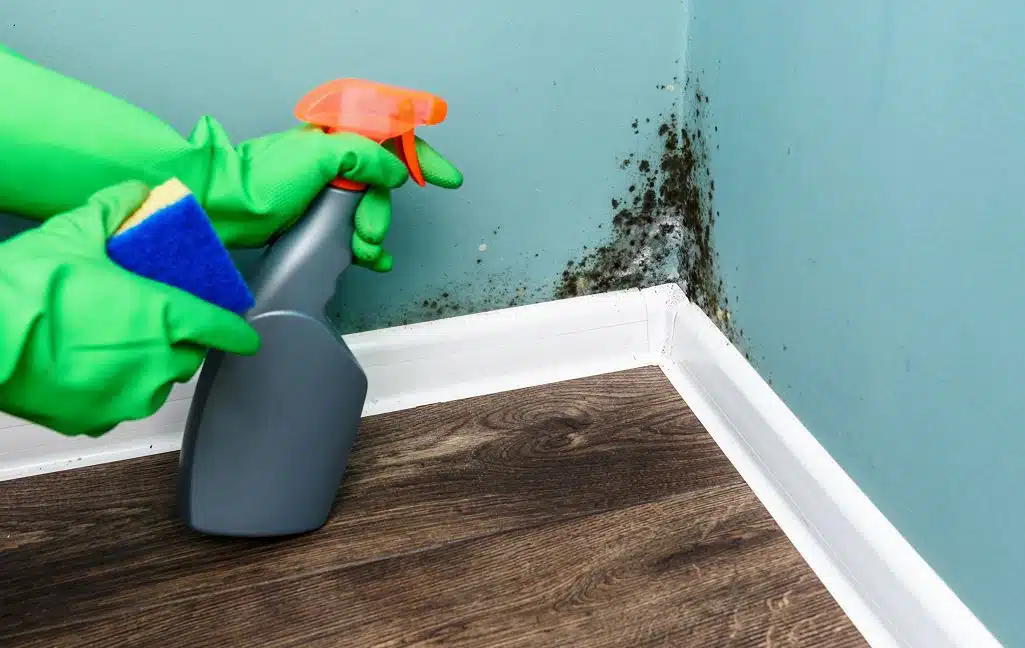Have you ever spotted a tiny black mark in the corner of your wall and brushed it off as dust? Over time, it spreads, darkens—and suddenly, the room smells musty. That “smudge” could be mold, quietly growing behind your walls.
The good news? You can catch it early and stop it fast. Simple steps can protect your home—and your health—before it gets worse.
So, Why Are These Black Spots Appearing? (Spoiler: It’s Not Just About Cleaning)
When walls start turning black, especially in corners, it’s often a sign of moisture buildup, not just dirt. Poor airflow in rooms like bathrooms, kitchens, or closed bedrooms allows humid air to settle on cold walls, creating ideal conditions for mold.
Sometimes, the problem is external, like a leaking roof, blocked gutter, or water seeping in from the ground. Damaged walls can also let moisture in. Poor insulation, particularly where indoor and outdoor temperatures meet (thermal bridges), can cause condensation buildup.

Even furniture pressed against walls can trap moisture, allowing mold to grow unnoticed. According to France’s ANAH, 1 in 5 homes experiences moisture issues. If you’re seeing these signs, you’re not alone.
Pro tip: Don’t ignore those hidden corners. They’re often the first to show signs when something’s off.
What Should I Do Right Away to Keep It from Getting Worse?
Act quickly when you spot mold to prevent it from spreading.
- Open windows for 10 minutes daily to improve airflow and reduce moisture.
- Clean mold with a mix of warm water and white vinegar; use hydrogen peroxide for tougher mold. Avoid vinegar on natural stone or marble.
- Move furniture away from walls to improve air circulation.
- Use a moisture absorber or small dehumidifier to control humidity.
Bonus: In winter, crack windows twice a day to clear condensation.
Extra tip: Add tea tree oil to your cleaning solution for a pleasant scent and antifungal properties!

How Do I Keep It from Coming Back? (Because No One Wants a Monthly Mold Battle)
To prevent mold and damp issues in your home, start by addressing the root cause. Here’s how:
-
Improve airflow: If ventilation is poor, consider installing a mechanical system or upgrading your exhaust fans. It can make a significant difference.
-
Monitor humidity: Use a hygrometer to check the humidity levels. Aim for 40%–60% for ideal conditions.
-
Apply anti-moisture paint: For walls prone to dampness, use anti-moisture paint. While not a complete solution, it provides added protection.
-
Check for leaks or insulation issues: Don’t guess—hire a professional to inspect your home.
Avoid these mistakes: Never paint over mold, as it will return. Also, don’t use unvented gas space heaters—they add moisture and make matters worse.

What If It Keeps Coming Back No Matter What?
If stains keep reappearing, there might be a hidden issue. Check your roof, walls, and gutters for potential sources.
- For rising damp, injecting resin can stop moisture from rising. Flaking or white walls could indicate saltpeter, which needs special treatment.
- Calling a professional, like an RGE expert, can save money in the long run by addressing the issue early.
Renters should act quickly and inform the landlord, as mold can pose health risks and requires immediate attention.
Final Word: Mold Doesn’t Have to Win
Now that you know how to tackle those pesky black spots, it’s time to take control. With the right habits, natural remedies, and a bit of care, those spots won’t stand a chance.
Take another look at that corner—you’ve got this!





